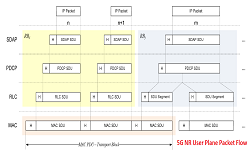5G Voice Services Implementation Options

- Voice over NR (VoNR): UE camps on NR cell. Voice and data services are transferred via NR. When UE moves to the edge of NR coverage, the voice service is handed-over to LTE. This solution is applied after large-scale deployment of 5G. As the target voice solution, it provides fast call setup (1.5 s) as well as high-speed data transmission to deliver better user experience.
- EPS Fallback: UE camps on 5G NR to implement data service while falls back to LTE to implement voice service. After a UE makes a voice call, NR instructs the UE to access LTE by triggering a handover or redirection procedure. Then IMS provides VoLTE service for the UE. This option is applicable with the early phase of 5G deployment where NR is deployed with 5GC for hotspot coverage. It can avoid voice interruption due to frequent handovers and guaranteeing user experience.
- RAT Fallback: UE camps on 5G NR to implement data service while falls back to eLTE to implement voice service. When a UE makes a voice call, NR instructs the UE to access eLTE by triggering a handover or redirection procedure. After the voice session is terminated, the UE moves back to 5G. Then IMS provides VoLTE service for the UE. This solution requires the existing LTE to be upgraded to eLTE, that is, eNodeB shall support N1/N2/N3 interface. Moreover, eLTE and NR shall be deployed together, which has a high requirement for existing network upgrade.
- 5G SRVCC: 5G SRVCC is a topic under study with 3GPP R16. With 5G SRVCC, 5G UE camps on 5G NR and implements voice service using VoNR. At the edge of NG-RAN, voice can be handedover to UTRAN CS by using 5G SRVCC technology; or UE falls back to UTRAN CS for
call establishment and returns to NR immediately after the call is terminated. - VoLTE/CSFB: In Option 3 NSA deployment mode, UE accesses the network through the LTE control channel, so it can directly implement voice service by means of VoLTE or CSFB.
Related Posts
- 5G Standalone Mode Registration-Attach Call Flow
- 5G Identifiers SUPI and SUCI
- 5G Authentication and Key Management 5G-AKA
- 5G New Radio Throughput Capabilities
- 5G New Radio Spectral Efficiency



